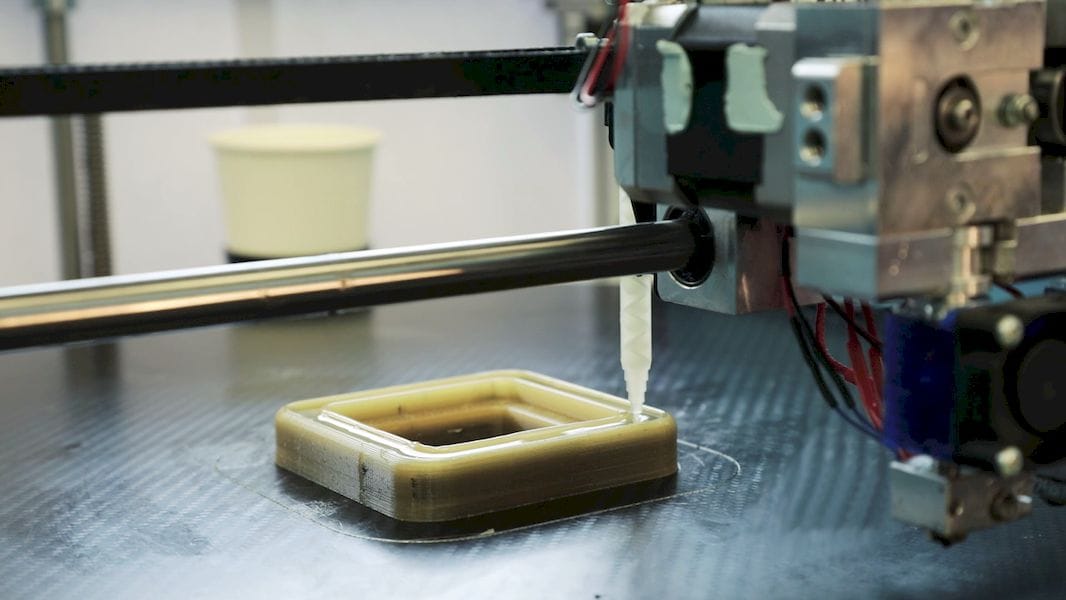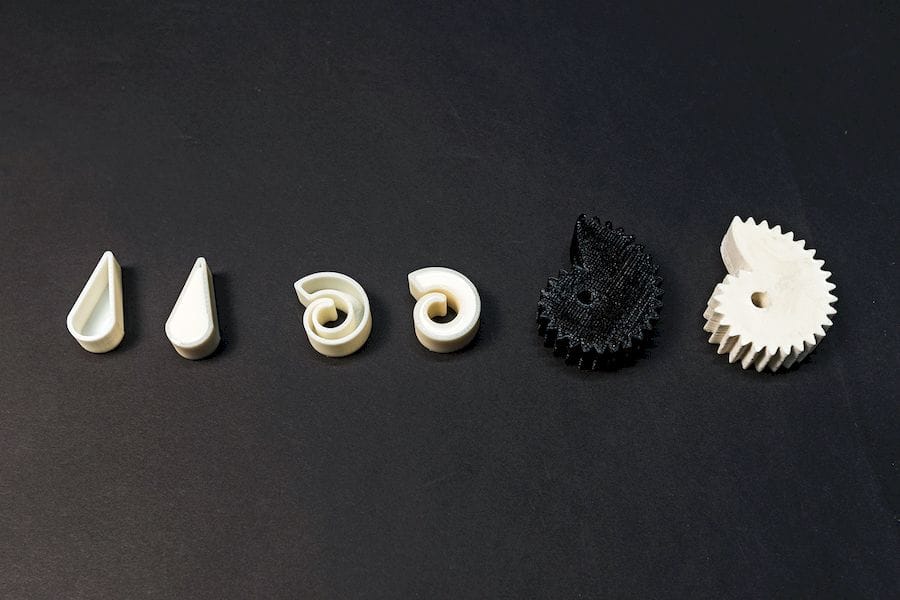
Researchers at the Fraunhofer Institute for Manufacturing Engineering and Automation IPA have developed an unusual method of combining two manufacturing processes.
Readers are familiar with 3D printing, in which arbitrary geometries are gradually printed, layer by layer. While the free geometry is a good thing, the bad thing is that the processes currently available have a highly constrained set of possible materials.
That’s definitely not good if you happen to require a particular material for your project that isn’t “on the list”.
One way around this is through casting, particularly using thermoset materials, which solidify from a liquid state. The most frequently approach is to 3D print a mold, and then pour in the liquid material for setting. Once set, the mold is removed (and often discarded) and you have your object in the correct material.
But that is two manufacturing steps: 3D printing, and then casting. What if you could combine the two together?

That seems to be what the Fraunhofer IPA researchers have done. They have devised a new process they call “additive free form casting” (AFFC) that uses both approaches in a single machine.
It’s actually pretty ingenious: the AFFC machine first prints the mold in PVA, a dissolvable 3D print material. Once the mold is finished, an injector automatically fills the mold with the thermoset material. Typically this is done by mixing two stable chemicals to create the liquid thermoset. The experiments done by Fraunhofer IPA suggest solidification can happen in as fast as only three minutes.
Once the part has set, the entire structure is dropped into a bath of solvent (water) to remove the PVA. That leaves you nothing but the completed part in the desired thermoset material.
This process is quite attractive because it offers not only a material advantage, but a speed advantage as well. The tedious 3D print is actually quite short because only the mold is printed, not the entire object. That, combined with the very rapid process of filling the mold with liquid thermoset material and setting, yields a rather quick process.
This process could open up many more materials to the capabilities of 3D printing, as any contiguous geometry is still possible with this approach. Fraunhofer IPA suggests materials such as foams, insulators and others are now easily possible with AFFC.
No, you cannot buy an AFFC machine today, as the research appears to be completed, but not yet commercialized. It seems that the Fraunhofer IPA researchers are now seeking industry partners to assist in the development of a future AFFC product for industry.
Via Fraunhofer IPA

